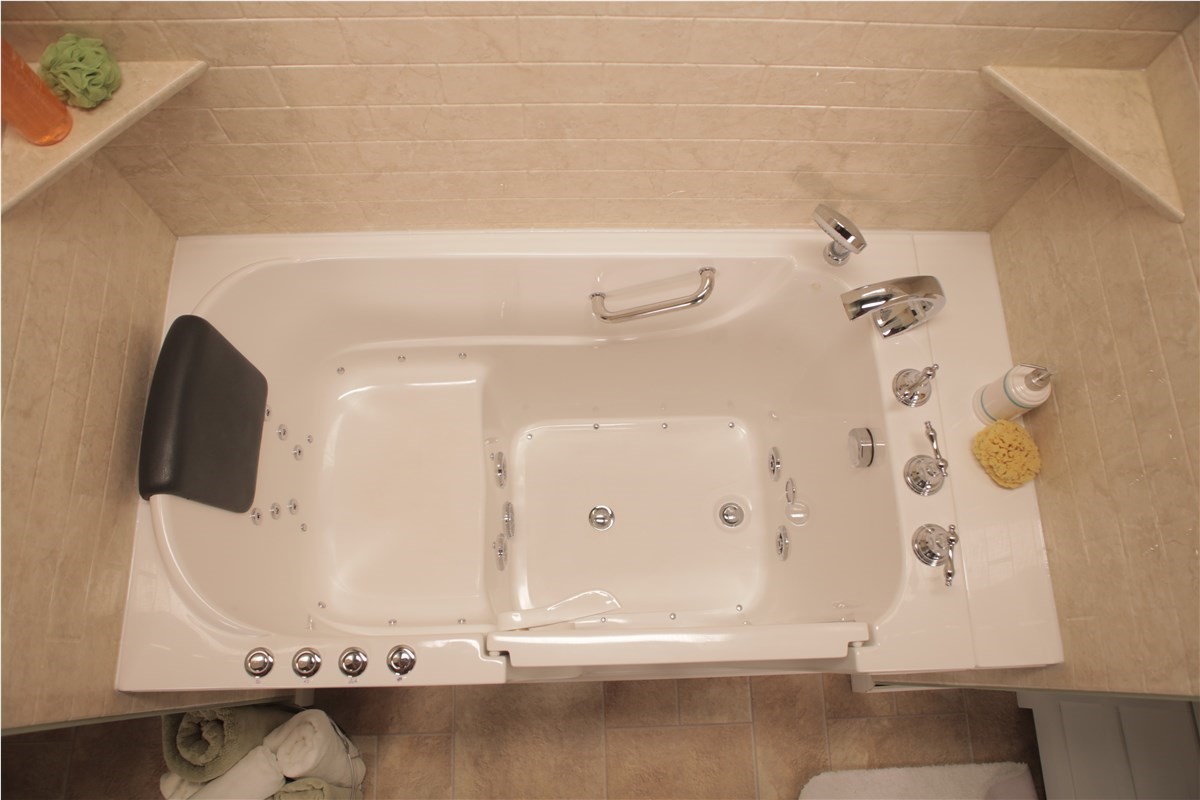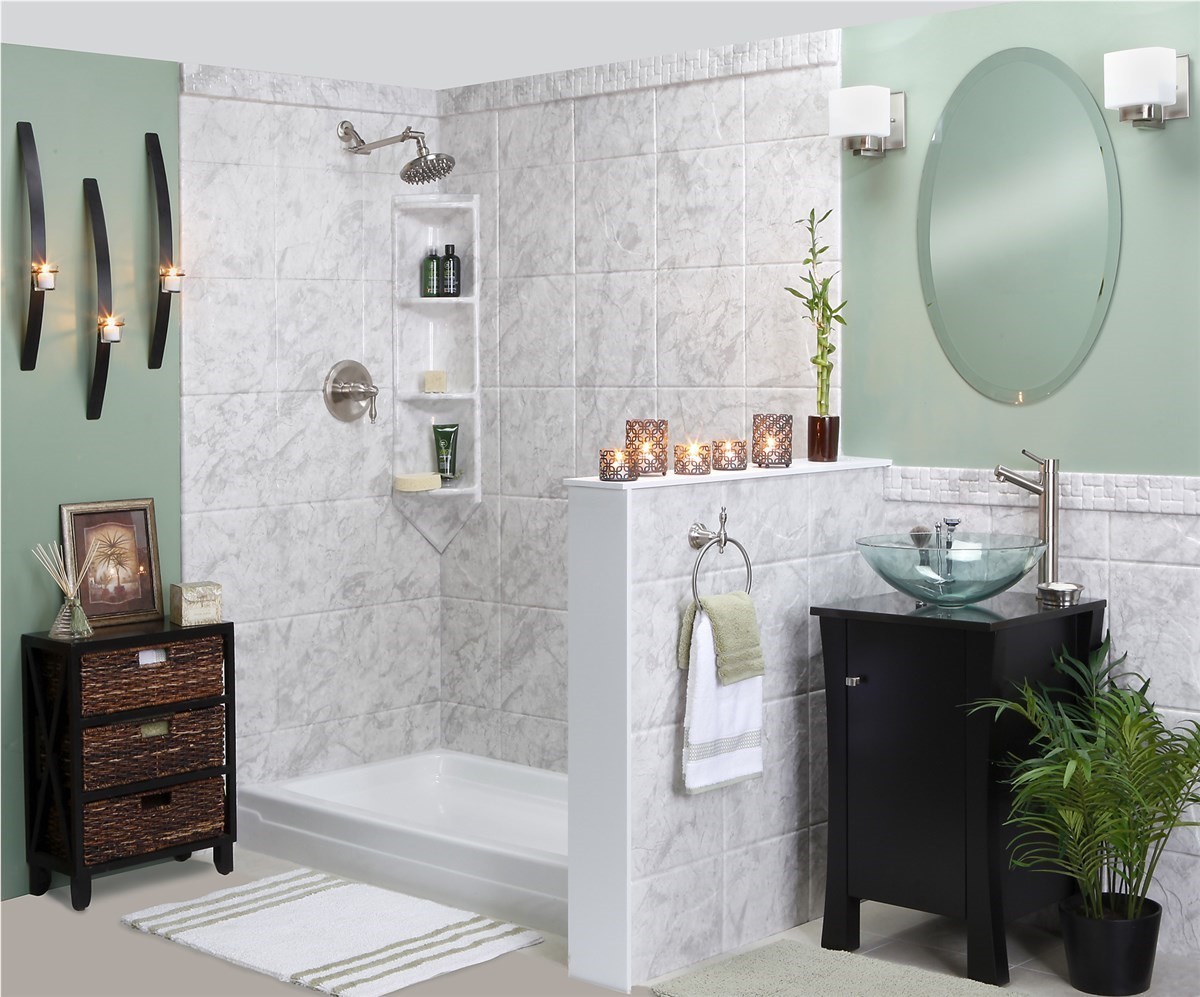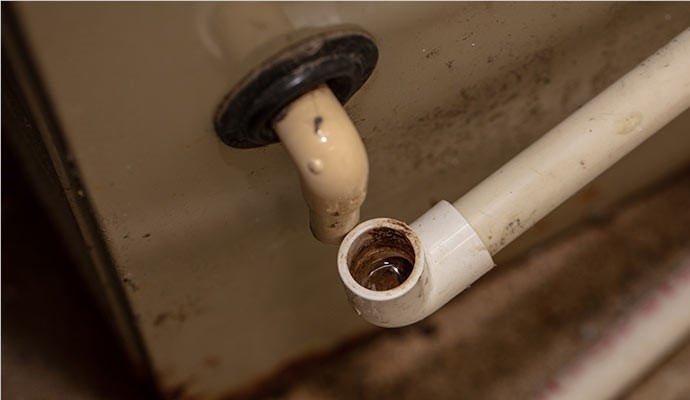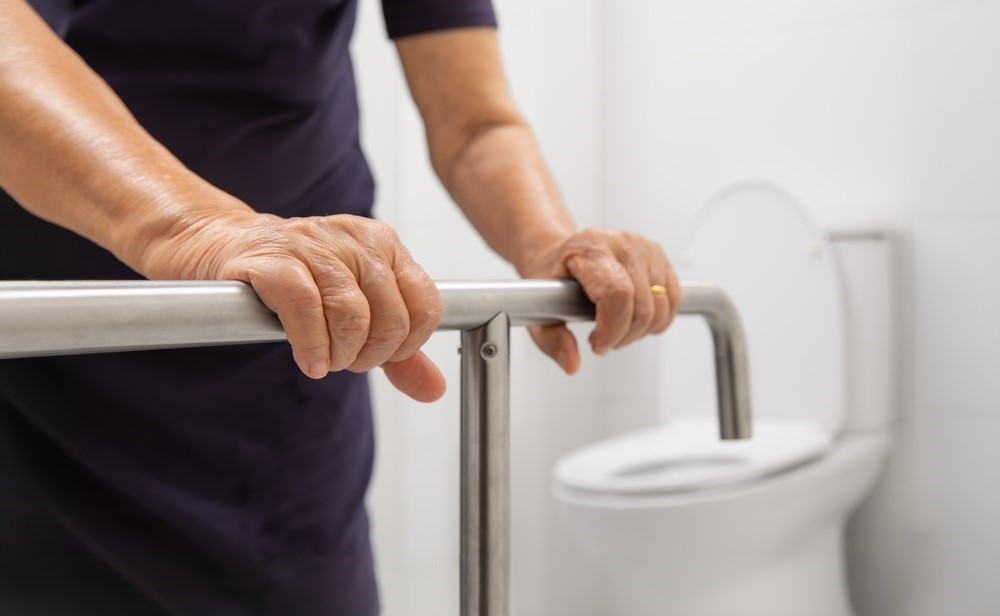
Replacing a tub with a walk-in shower is a smart choice for seniors who want to improve safety and comfort at home. But before you begin, it’s important to plan carefully. Here are seven things to consider when replacing your tub with a walk-in shower.
1. Your Goals for Your New Walk-In Shower
Knowing your goals upfront will help you make the right choices now and avoid regrets later. Ask yourself these questions before you start:
What kind of accessibility do I need?
Do you want a safer shower for aging in place? Or do you need a shower that allows for wheelchair access?
If your goal is to make your shower safer, a traditional walk-in shower with a low threshold is a great option. These showers are easier to get into than a tub and can help prevent falls.
However, if you or someone in your home uses a wheelchair, a roll-in shower might be your best option. These showers have no threshold, making it possible to roll a wheelchair in and out. But keep in mind that roll-in showers require more space and proper waterproofing underneath the bathroom floor. So, they’re a larger, costlier, and more time consuming project than a typical walk-in shower.
What are my budget constraints?
Walk-in showers range from basic models to elaborate designs with custom features. By understanding your financial limits, you can better evaluate your options and choose features with the best value for your budget.
How long do I plan to live here?
If you’re planning to live in your home for 10-15 years, the affect a walk-in shower has on resale value will matter less than if you plan to move in three to five years.
2. Types of Walk-In Showers
There are several types of walk-in showers, each designed to cater to different needs and preferences. Here are the most common types:
Open Walk-In Showers
Open walk-in showers don’t have doors. Some are fully open. Others have glass on one side to keep splash-out to a minimum. The absence of doors makes these showers more easily accessible than fully enclosed showers.
Fully Enclosed Walk-In Showers
These walk-in showers have doors. You can choose from various door styles, like sliding doors or hinged doors, depending on your space and preference. Enclosed walk-in showers are are best at preventing water from escaping. But they aren’t as easily accessible as open walk-in showers.
Roll-In Showers
Roll-in showers are made for wheelchair access. They have no threshold. Instead, they have a crushable dam—a rubber barrier—that helps keep water in. But even with a shower curtain, they let water escape onto the bathroom floor. So waterproof and slip-resistant flooring is a must.
3. How Walk-In Showers Affect Resale Value
Most of the time, a walk-in shower adds value. But not always. The neighborhood you live in plays a part in how valuable a walk-in shower will be when it’s time to sell.
For example, if your neighborhood attracts younger buyers, converting all of your bathtubs to walk-in showers would likely lower your home’s resale value. Young families prefer homes with at least one bathtub. Installing a walk-in shower in one bathroom and leaving a tub in others would be wise in this situation.
On the other hand, if you live in a community where the majority of homebuyers are older—such as Fairfield Glade or Tellico Plains in Middle Tennessee—having multiple walk-in showers could actually increase your home’s appeal. In these areas, buyers are likely to appreciate accessibility features and may be willing to pay a premium for them.
4. Installation Time and Disruptions
Installation time varies according to the walk-in shower you choose. Here’s what to expect:
Acrylic or Composite Walk-In Showers
If you install an acrylic or composite walk-in shower, the job can be done in one or two days. These showers are quick to install because they’re templated and cut to fit on site, so one full wall is completed at a time.
Tiled Walk-In Showers
If you want a walk-in shower with tile, the installation will take one week to 10 days. Each tile has to be cut and placed individually, plus the tile requires waterproofing and grouting, so tile showers take more time to install.
Roll-In Showers
Installing a roll-in shower takes at least two weeks, because the entire bathroom floor must be waterproofed to prevent damage from splash out.
5. Space Constraints
Typical walk-in showers can fit into the smallest of bathrooms, but you’ll need quite a bit of space for a roll-in shower.
Roll-In Showers
The Americans with Disabilities Act (ADA) recommends a minimum shower size of 5 feet by 5 feet to allow for a 60-inch turning radius. Additionally, you’ll need enough space outside the shower to maneuver the wheelchair around the toilet and vanity. This means an ADA-compliant bathroom could be as large as 8 feet by 12 feet.
Walk-In Showers
For a standard walk-in shower, you have more flexibility with space. Most homes already have a bathtub space that’s about 2.5 feet by 5 feet. You can usually replace a tub with a walk-in shower without changing the layout of your bathroom.
6. Quality, Durability, and Accessibility
When choosing materials for your walk-in shower, focus on quality and durability— especially when it comes to accessibility features.
For example, fiberglass showers used to be popular, but they’re not the best choice for safety. Fiberglass showers come with pre-molded handles that aren’t strong enough to support a lot of weight.
It’s better to invest in higher-quality materials like acrylic or solid surfaces. These materials are durable and allow for safety-compliant grab bars to be attached.
Also, consider installing plywood backing behind your shower walls. This is important if you want to customize your grab bar placement without having to locate studs and allows you to add more grab bars in the future. At Innovative Baths, plywood backing is a standard feature on all our shower installs.
7. Financial Assistance Options for Walk-In Showers
If you’re worried about the cost of a walk-in shower, there are options to help, especially for veterans.
Veterans Affairs (VA) Grants: The VA offers grants to help cover the cost of a walk-in or roll-in shower. To get a grant, you need a prescription from your doctor. You also need to get approval before starting any work. The VA won’t reimburse you for work done before the grant is approved.
If you’re planning a big renovation, there are other VA grants that can cover the whole cost. But these grants take much longer to process, sometimes 18 months or longer.
Other Grants: USDA Rural Development and Habitat for Humanity also offer grants. These are typically aimed at low-income households or those living in rural areas. These grants also involve a long application process, so plan accordingly.
To see a list of funding sources for home modifications in Tennessee, click here.
Payment Plans for Walk-In Showers in Tennessee
If you live in Middle or East Tennessee, Innovative Baths offers 0% financing options to help make your walk-in shower project more feasible. Contact us today for a free consultation!
Subscribe to Innovative Home Services's Blog








Comments